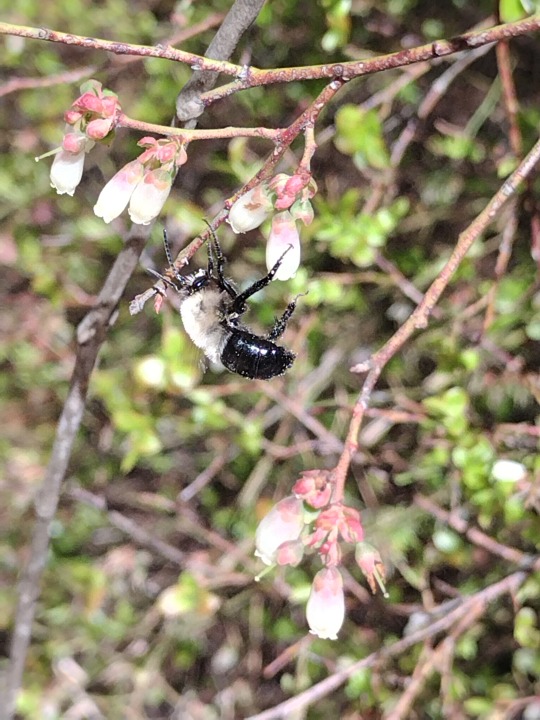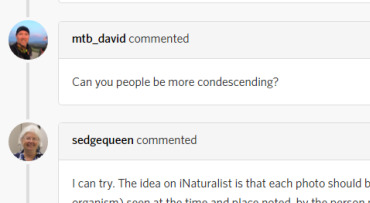Mel(she/her). Wildlife Biologist 🪡Oregon Coast! Bugs,birds,fish Art Etc
Don't wanna be here? Send us removal request.
Text


voices down the corridor; joshua tree, california
instagram - twitter - website
8K notes
·
View notes
Text


Oregon Fawn Lily (Erythronium oregonum)
Near Ridgefield,WA
23 notes
·
View notes
Text
Please enjoy this delightfully ridiculous mating display from a Snowy Egret in peak breeding plumage. That signature gurgling call you can hear at the start of the video is one of my favorite noises in the animal kingdom! This is maybe the best time of year to go birding where I live as the swamps and wetlands are simply electric with activity and life. Everywhere you turn your head there is something remarkable to behold.
3K notes
·
View notes
Text


Beautiful brook lamprey
0 notes
Text
Yellowjacket-Mimicking Moth: this is just a harmless moth that mimics the appearance and behavior of a yellowjacket/wasp; its disguise is so convincing that it can even fool actual wasps

This species of moth (Myrmecopsis polistes) is one of the most impressive wasp-mimics in the world. The moth's narrow waist, teardrop-shaped abdomen, black-and-yellow patterning, transparent wings, smooth appearance, and folded wing position all mimic the features of a wasp. Unlike an actual wasp, however, it does not have any mandibles or biting/chewing mouthparts, because it's equipped with a proboscis instead, and it has noticeably "feathery" antennae.
There are many moths that use hymenopteran mimicry (the mimicry of bees, wasps, yellowjackets, hornets, and/or bumblebees, in particular) as a way to deter predators, and those mimics are often incredibly convincing. Myrmecopsis polistes is one of the best examples, but there are several other moths that have also mastered this form of mimicry.

Above: Pseudosphex laticincta, another moth species that mimics a yellowjacket
These disguises often involve more than just a physical resemblance; in many cases, the moths also engage in behavioral and/or acoustic mimicry, meaning that they can mimic the sounds and behaviors of their hymenopteran models. In some cases, the resemblance is so convincing that it even fools actual wasps/yellowjackets.

Above: Pseudosphex laticincta
Such a detailed and intricate disguise is unusual even among mimics. Researchers believe that it developed partly as a way for the moth to trick actual wasps into treating it like one of their own. Wasps frequently prey upon moths, but they are innately non-aggressive toward their own fellow nest-mates, which are identified by sight -- so if the moth can convincingly impersonate one of those nest-mates, then it can avoid being eaten by wasps.

Above: Pseudosphex laticincta
I gave an overview of the moths that mimic bees, wasps, yellowjackets, hornets, and bumblebees in one of my previous posts, but I felt that these two species (Myrmecopsis polistes and Pseudosphex laticincta) deserved to have their own dedicated post, because these are two of the most convincing mimics I have ever seen.

Above: Pseudosphex sp.
I think that moths in general are probably the most talented mimics in the natural world. They have so many intricate, unique disguises, and they often combine visual, behavioral, and acoustic forms of mimicry in order to produce an uncanny resemblance. Moths are just so much more interesting than people generally realize.
Sources & More Info:
Journal of Ecology and Evolution: A Hypothesis to Explain Accuracy of Wasp Resemblances
Entomology Today: In Enemy Garb: A New Explanation for Wasp Mimicry
iNaturalist: Myrmecopsis polistes and Pseudosphex laticincta
Transactions of the Entomological Society of London: A Few Observations on Mimicry
14K notes
·
View notes
Text
A caveat to this study: the researchers were primarily looking at insect pollinator biodiversity. Planting a few native wildflowers in your garden will not suddenly cause unusual megafauna from the surrounding hinterlands to crowd onto your porch.
That being said, this study backs up Douglas Tallamy's optimistic vision of Homegrown National Park, which calls for people in communities of all sizes to dedicate some of their yard (or porch or balcony) to native plants. This creates a patchwork of microhabitats that can support more mobile insect life and other small beings, which is particularly crucial in areas where habitat fragmentation is severe. This patchwork can create migration corridors, at least for smaller, very mobile species, between larger areas of habitat that were previously cut off from each other.
It may not seem like much to have a few pots of native flowers on your tiny little balcony compared to someone who can rewild acres of land, but it makes more of a difference than you may realize. You may just be creating a place where a pollinating insect flying by can get some nectar, or lay her eggs. Moreover, by planting native species you're showing your neighbors these plants can be just as beautiful as non-native ornamentals, and they may follow suit.
In a time when habitat loss is the single biggest cause of species endangerment and extinction, every bit of native habitat restored makes a difference.
6K notes
·
View notes
Text





[PHOTOS TAKEN: JUNE 5TH, 2025 | Image IDs: Five photos of a black and white, male southeastern blueberry bee feeding from and pollinating the white and pink flowers of a wild blueberry plant /End IDs.]
Habropoda laboriosa, the southeastern blueberry bee! A male to be specific. This species is specialized to, amongst a couple other species, Vaccinium blueberry (and related berry) plants, the flowers pictured being from a wild plant from a species within said genus! They're active early in spring and are VERY important for the blueberries.
38 notes
·
View notes










